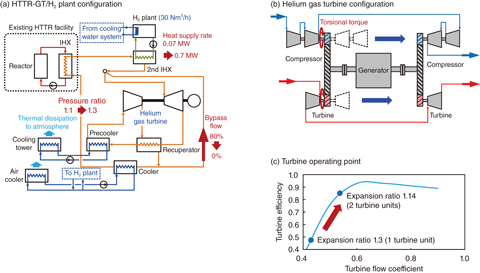
Fig.6-10 Configuration of the HTTR-GT/H2 plant and the helium-gas turbine
We have been conducting research and development toward commercialization of highly efficient, CO2-emission-free H2 cogeneration by application of heat provided from a high- temperature gas-cooled reactor (HTGR) with inherently safe characteristics.
One of the key technologies for commercialization is a control method that considers the unique characteristics of HTGRs and closed-cycle helium gas turbines, namely (1) prevention of turbine overspeed by system-pressure control against loss of a generator load; (2) mitigation of turbine-inlet-temperature escalation by introducing low-temperature helium from the compressor outlet against upsets of the hydrogen-production plant (H2 plant), and (3) start-up and shut-down operations by primary coolant-inventory control, which does not rely on a large external power supply. We are aiming to construct an HTTR gas turbine-cogeneration plant (HTTR-GT/H2 plant) to perform demonstration tests for the control methods.
The requirements for the design of HTTR-GT/H2 plant are to not only enable operability-demonstration tests but also minimize modification of the existing HTTR facility. In response, a heat-application system is devised as a secondary system and a second intermediate heat exchanger and a helium-gas turbine are installed in cascade to demonstrate the series operation of the H2 plant and the helium-gas turbine in the commercial system (Fig.6-10(a)). In addition, design improvements for the helium-gas turbine are proposed to enable the observation of plant-dynamic behavior. First, two turbine units are connected to each end of a generator shaft to eliminate shaft vibration owing to torsional torque generation (Fig.6-10(b)). Second, two turbine units with a low optimal-expansion ratios are employed instead of one turbine unit with a high expansion ratio to operate at 90% efficiency while meeting the turbine-speed limit owing to structural integrity, and waste heat is utilized to maximize power-generation and H2-production outputs (Figs.6-10(a) and (c)).
As a result of a heat-and-mass-balance evaluation and a manufacturability assessment by an equipment supplier for the HTTR-GT/H2 plant design, it was confirmed that operability-demonstration tests such as loss of generator load, simulation of the upset of the H2 plant, and start-up and shut-down operation tests can be performed in the HTTR-GT/H2 plant with key achievements: H2 cogeneration with a power output of 1 MW at a cycle pressure ratio above 1.3 and an H2-production rate of 30 Nm3/h, and elimination of bypass flow from the recuperator outlet to turbine inlet.
Further study will be made for component design and safety analysis of the HTTR-GT/H2 plant. The external committee will review the results and make recommendations as to whether the project is ready to proceed to the construction phase.